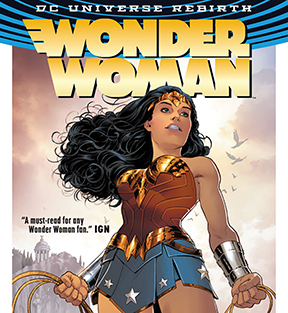
A history of women in comic books (Part 1)
by Sierra Billingsley
With the long awaited release of DC’s Wonder Woman – the first ever appearance of the iconic Amazon on Hollywood’s silver screen, coming 76 years after her initial debut in Sensation Comics #8 – one cannot help but turn a gaze back to the many women who have inhabited comics these last three quarters of a century. Wonder Woman may have been the first major super-heroine, but she was far from the last.
The years before and during WWII were fertile ground for the seeds of superhero comics, with their stories blooming brightly among various other genres, such as romance, westerns, and sci-fi. However, in the post WWII era, the superhero genre struggled to remain relevant in a world that was ready to move on from cataclysmic battles, etc. Here, the industry began to actively court the young women who’d been reading their comics at newsstands alongside their male counterparts.
Timely Comics, a precursor to today’s Marvel Comics, gave us the character of Miss America, an atomic blonde with a medley of superpowers whose image would later be rebranded as today’s Miss America: a Latin-American teen by the name of America Chavez who fights inter-dimensional terrors alongside her equally youthful teammates. Meanwhile, DC comics birthed Black Canary, a leather-clad, motorcycle riding crime fighter whose name and legacy are still thriving today, upheld by the original character’s daughter, Dinah Lance. The most recent incarnation of the character is widely recognized thanks to her role on the widely popular CW television show Arrow, while in comics she remains a longtime staple of the Justice League.
In 1958, reporter and longtime love interest of the Man of Steel, Lois Lane finally received her own title: Superman’s Girlfriend, Lois Lane. While her story mostly revolved around schemes to win over Superman’s love and affection, the series helped bolster a female comic character whose existence predated even Wonder Woman, and Lane’s title became one of DC’s top selling books in the 60s. Its popularity allowed the character to survive, thrive, and then evolve into the hard hitting investigative journalist she’s now famous for being.
Not long after Lane’s foray into the limelight, Marvel exploded onto the scene with a plethora of female characters, all with a different array of powers, identities, and backgrounds. Although the publishing company had existed in previous incarnations, the first female character to fly under Marvel’s banner, as most know it today, was Susan “Sue” Storm, the Invisible Woman.
The only female member of her team, Sue was able to turn herself invisible at will after being exposed to cosmic radiation during a space mission alongside her future husband, brother, and friend. While early on she was mostly used as a damsel in distress – the fate of many female comic characters through the 50s and early 60s – later on she developed the ability to produce psionic force fields; with the evolution of her powers came the evolution of her personality. Sue transformed into the capable co-leader of her team, constantly balancing the life of a superhero with
that of wife and, eventually, mother. Meanwhile, alongside the birth of the Marvel universe at large, came the birth of one of the most famous and prolific superhero franchises: the X-Men.
One of the team’s earliest members was Jean Grey, the telepathic and telekinetic mutant who has pivoted between living and dead, the past and future, good and evil since her conception. Grey, whose first death was put into motion as part of a plan to create the first “cosmic super-heroine,” has served as on-again-off-again host for the Phoenix Force, a fiery and terrifying entity who exists as an avatar for the spark of creations itself. It has no allegiance to anything beyond its own whims and serves as both savior and foe to mutant-kind within the X-Men mythology.
Shortly after Jean came Storm, the Kenyan-American mutant blessed with control over the weather itself. Her real name being Ororo Munroe, she is iconic for being the first black super-heroine in comics. Regarded as princess among her own people and occasionally goddess among others, she has also served as the Queen to the fictional country Wakanda. The secretive and technologically advanced nation is famous in-universe for being one of the only locations where one can find vibranium, an incredibly desirable metal. The substance makes Wakanda a hefty political entity, despite its small size. As a result its leaders, Storm among them, are deeply entrenched in international political on goings.
Between the goddess symbolism in her comics, her role as liaison between a small, insular nation and the larger world, and her prominence within in the Marvel Universe, Storm has often been compared to Wonder Woman. She was, in fact, shown besting the Amazon in combat in the 1996 DC vs. Marvel mini-series due to being voted the more popular of the two characters by readers. As such, she has often been lauded as one of Marvels most important female characters.
If you’d like to find out more about the history of female superheroes, local comic book shops like The Great Escape in Bowling Green carry a variety of printed materials featuring them, such as current comic book titles, back issue comic books and trade paperbacks that reprint stories from both bygone eras and more recent popular titles.

